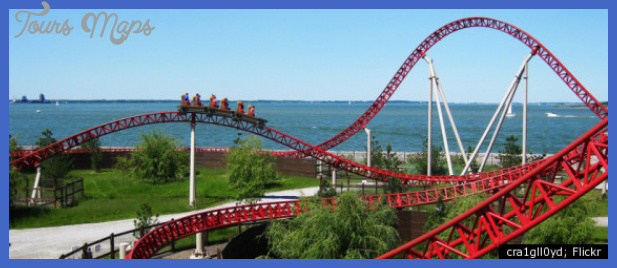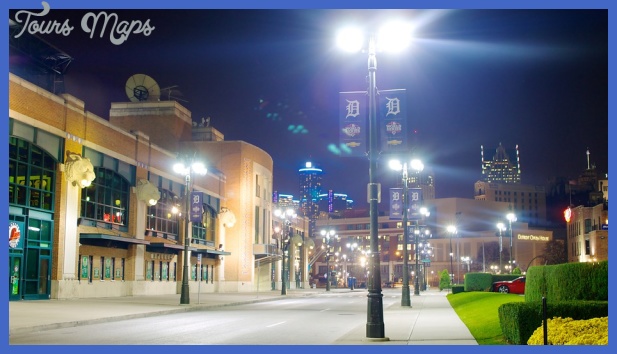Michigan cultural contributions
In beet fields, cherry orchards, auto plants, and suburban homes, Latino and Latina workers underwrote the transformation of Michigan into a consumer society, without usually enjoying full access to the evolving culture of plenty that they helped to create. This, in itself, is surely a remarkable cultural contribution to Michigan and the United States. When Latino and Latina artists and academics contribute to high culture in Michigan, they often choose to make migrant and factory workers the subjects of their work. The magnificent frescoes painted by Diego Rivera in 1932-1933 at the Detroit Institute of Arts, showing workers in Michigan factories and fields, are perhaps the best-known example.
Similar themes appear in the work of Chicano muralists in Southwest Detroit, including George Vargas and Vito Valdez. The Latino Studies programs at Wayne State University and the University of Michigan, and the Julian Samora Research Institute at Michigan State support cultural and scholarly production, while working to preserve a place for Latino students in higher education. La Casa de la Unidad, a community-based organization in Detroit, works to bring arts to Latinos in Michigan and to promote artistic production by Latinos. The Fronteras del Norte Oral History Project collects the memories of early Latino settlers.
Latinos contributed to the cultural makeup of the state too, through efforts to build and develop their own community institutions. Since the 1920s, festivals and public celebrations have been important elements of Latino cultural life in Detroit. Representatives of the Mexican government encouraged the celebration of national holidays in an effort to bind migrants to the homeland. But these festivals continued through the 1950s, even as the local organizers grew apart from Mexican national politics, seeking to assert their U.S. citizenship through political action. The Comite Patriotico Mexicano and other clubs and organizations, such as the Caballeros Catolicos and the American Legion, formed the backbone
of the effort to promote holidays and festivals. Throughout the year these groups organized social dances and beauty pageants. Mexican national holidays, such as Cinco de Mayo, and regular dances and functions remained ways of uniting and consolidating an ethnic constituency in the 1960s. In the early years of the twenty-first century, as anti-immigrant forces gained strength nationally, Cinco de Mayo parades took on renewed significance as public demonstrations in defense of migrant rights.
Local Spanish-language radio broadcasts appeared sporadically the 1930s and 1940s, although none was ever able to succeed as a commercial venture. In the 1950s Javier Cardenas, a migrant from Guadalajara by way of Brownsville, Texas, operated radio programs first in Pontiac, then in Ann Arbor, and then in Monroe, broadcasting Spanish-Language music and promoting patriotic and religious festivals in the colonia. Spanish-language newspapers also appeared and disappeared with regularity beginning in the 1930s. The ready availability of big-city newspapers such as La Prensa from New York and La Opinion from Los Angeles and a variety of papers from Mexico itself, meant that local publications had difficulty attracting readers and sustaining an advertising base.
The first Spanish-language newspaper in the state to produce more than a handful of issues was Renacimiento, which began publication in Lansing in 1970 with a grant from Model Cities, a federal program. Not until the 1990s did self-sustaining Spanish-language newspapers appear: Latino in Detroit and El Vocero Hispano in Grand Rapids. In 2004 Univision created a Detroit affiliate of the national Spanish-language network. In television broadcasting, the power of national and international production over local content was still more overwhelming. Except for one half-hour news program, this network affiliate exclusively broadcast programming produced in the major markets of Miami, Los Angeles, New York, San Juan, and Mexico City. Although Latinos in Michigan continue to create their own cultural practices, they remain integrated in national and transnational industries that produce most of the news, music, and entertainment Latinos consume.
Since the early days of the Mexican colonias, Latino restaurants and grocery stores in towns and barrios around the state have provided local outlets for imported foodstuff and cultural products from tortillas to flags to compact discs. With the arrival of Puerto Ricans and South and Central Americans, these stores began offering more diverse menus and products. Stores and restaurants provide links to homeland markets, familiar commodities, and even services to call or send money home. Public spaces welcoming to Latinos and Latino culture also formed the backbone of local popular culture and community identity. As a result, the threat to Latino establishments posed by freeway construction was a major concern of community leaders in the period after World War II, and the basis of community action in the early 1970s. In the 1980s a coalition of community activists, local entrepreneurs, and government agencies began to incorporate displays of ethnic
distinctiveness, such as restaurants and festivals, into a campaign to draw tourists into Southwest Detroit, an area which was later renamed Mexicantown. To preserve the community they imagined ways in which institutions and products previously targeted only at the Latino community might also be marketed to outsiders. The centerpiece of this effort is the multimillion dollar Mexicantown International Welcome Center and Mercado, at the entrance of the Ambassador International Bridge. The center has space for cultural productions, ethnic shops, and places to eat Mexican food. Planners hope that this investment in a monument to Latino culture will contribute to presenting a new and improved city of Detroit to the millions of visitors who enter the United States through this bridge each year.
notes
1. For number of Mexicans and number of Mexicans repatriated, see Vargas, 1999, 75 , 84. On ethnic Detroit, see Kenneth Waltzer, East European Jewish Detroit in the Early Twentieth Century, Judaism, 2000.
2. Gamio, 1930, 86.
3. Oral history (originally collected by Ciro Sepulveda) and statistics on repatriation are from Vargas, 1999, 187, 189.
4. Badillo, 2003, 38.
5. President’s Comission on Migratory Labor, Stenographic Report, 1950, 477-478.
6. Clive, transcript of interview with Jane Gonzalez, 1973.
7. For employment statistics and ties to Texas, see Choldin and Trout, 1969, 82-86, 194-200.
8. Humphry, 1944, 332.
9. Choldin and Trout, 1969, 25.
10. President’s Comission on Migratory Labor, Stenographic Report, 1950, 451.
11. Wenk, 1968, 38-49.
12. Choldin and Trout, 1969, 49-50.
Michigan Vacations Photo Gallery
Maybe You Like Them Too
- The Best Cities To Visit in The World
- World’s 10 Best Places To Visit
- Coolest Countries in the World to Visit
- Travel to Santorini, Greece
- Map of Barbados – Holiday in Barbados










